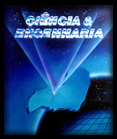AVALIAÇÃO DE METODOLOGIAS PARA A SIMULAÇÃO DE ENVELHECIMENTO DE MÃSTIQUES ASFÃLTICOS EM LABORATÓRIO
Resumen
O envelhecimento em laboratório de mástiques asfálticos, que possuem carga mineral, deve ser analisado de forma diferente dos procedimentos já existentes para ligantes asfálticos. Para amostras com fíler há a suspeita que no ensaio na Estufa de Vaso Pressurizado (PAV), de 100 °C por 20 horas, aconteça a decantação das partículas minerais, ocorrendo o envelhecimento apenas do ligante asfáltico e não na matriz ligante fíler. Esse estudo avalia um procedimento modificado de envelhecimento, reduzindo a temperatura para 60 °C e incrementando o tempo para 100 horas, com a agitação da amostra a cada 20 horas. Foram avaliados três diferentes fileres: cal hidratada, cimento Portland e pó calcário; dois ligantes asfálticos: um CAP 50/70 e um 85/100; e realizados os ensaios no Reômetro de Flexão em Viga e o de Energia de Fratura nas duas condições de envelhecimento. Os resultados da rigidez indicam que o envelhecimento modificado produz valores superiores aos do convencional, provocando um maior enrijecimento dos ligante e mástique asfáltico. Os resultados da taxa de relaxação permitem concluir que o tipo de envelhecimento é um fator influente. Nos dados de energia de fratura notou-se o mesmo comportamento da rigidez, assim, as amostras submetidas ao PAV convencional podem levar a resistências por fadiga superestimada. Palavras-Chave: fíler mineral; mástique asfáltico; ligante asfáltico; envelhecimento; energia de fratura. EVALUATION OF METHODOLOGIES FOR AGING SIMULATION OF ASPHALTIC MASTICS IN LABORATORY ABSTRACT The aging in laboratory of asphalt mastics, which have mineral fillers, should be analyzed differently from existing procedures for asphalt binders. For samples with filler, it is suspected that the decantation of the mineral particles takes place in the pressurized vessel (PAV), 100 °C for 20 hours, with aging of the asphaltic binder only and not in the binder-filler matrix. This study evaluates a modified aging procedure, reducing the temperature to 60 °C and increasing the time to 100 hours, with the shaking of the sample every 20 hours. Three different filers were evaluated: hydrated lime, Portland cement and limestone powder; two asphalt binders: one CAP 50/70 and one 85/100, and the tests were carried out on the Beam Flexural Rheometer and the Energy of Fracture in the two conditions of aging. The rigidity results show that the modified aging produces higher values than the conventional one, causing a greater stiffening of the binder and asphalt mastic. The relaxation rate results show that the type of aging is an influential factor. In the fracture energy data, the same behavior of the stiffness was noticed, so the samples subjected to conventional PAV can lead to overestimate fatigue strengths. Keywords: mineral filler, asphalt mastic, asphalt binder, aging, fracture energy.Descargas
Publicado
2018-05-11
Número
Sección
Engenharia Civil


